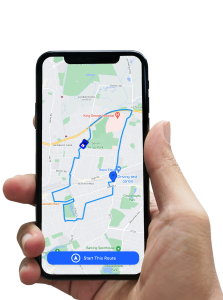Parallel parking is one of the manoeuvres that many UK learners dread — yet it’s a skill that can make a huge difference to both your confidence and your test success. Whether you’re trying to squeeze into a space on a busy high street or being asked to perform the manoeuvre during your driving test, knowing how to do it safely, smoothly, and under pressure is essential.
In this guide, we’ll break down parallel parking in the UK step by step, explain what examiners look for, highlight common mistakes to avoid, and share pro tips to help you get it right every time. We’ll also point you to the official gov.uk guidance on manoeuvres so you can cross-check with DVSA standards, and show how RouteBuddy can help you practise on the actual roads used for tests at your centre.
Why Parallel Parking Matters on the UK Test
Examiners look for three things: control, observation, and accuracy. You don’t need to be perfect, but you must park safely and neatly without affecting other traffic.
RouteBuddy: Your Parallel Parking Practice Partner
Reading guides is one thing — practising on the roads you’ll be tested on is what really makes the difference.
Start Practising for Your Test Today
Check Now
Step-by-Step Guide to Parallel Parking in the UK
1) Set Up
- Choose a legal space with at least 1½ car lengths.
- Pull up parallel to the vehicle in front of the gap, leaving about ½ metre.
- Stop with your rear bumpers level. Select reverse and check all around.
2) Begin the Reverse
- Reverse at walking pace, wheels straight.
- Keep scanning: rear window, mirrors, and blind spots.
3) Turn In
- When your rear wheels or rear quarter window align with the target car’s back bumper, apply full left lock.
- The rear of your car will swing towards the kerb.
4) Straighten at 45°
- When your car is roughly 45° to the kerb, straighten the wheels.
- Keep reversing slowly.
5) Tuck In
- As your front clears the other car’s rear, apply full right lock to swing the nose in.
- Aim to finish 20–30 cm from the kerb.
6) Finish and Secure
- Straighten the wheels, adjust forward/back if needed.
- Apply handbrake, select neutral/park, cancel signal.
- Final all-round observation.
Observation Routine
- Before moving: mirrors, left shoulder, right blind spot.
- During reversing: look mainly through the rear window, sweep mirrors, and check pavements.
- If anyone is affected: pause and let them pass.
Common Faults and Fixes
- Touching the kerb: stop, move forward slightly, re-adjust steering.
- Too wide from kerb: creep forward and re-angle.
- Over-steering early: delay your first turn slightly.
- Rushing: slow down — the slower you go, the more time you have to correct.
Practice Tips
- Begin on quiet streets with long spaces.
- Work down to tighter gaps.
- Practise with an ADI and on local test-centre roads.
💡 Pro Tip: Use RouteBuddy to discover the exact side streets examiners use near your test centre, so you can practise manoeuvres where they really happen.
Checklist
- Stop parallel, ½ metre gap
- Reverse very slowly
- Full left lock at rear bumper landmark
- Straighten at 45°
- Full right lock as front clears
- Finish 20–30 cm from kerb
- Secure car, all-round check
FAQs: Parallel Parking in the UK
Is parallel parking always on the UK driving test?
No. You’ll be asked to do one manoeuvre — it may be parallel parking, bay parking, or pulling up on the right.
👉 See full details on gov.uk: Manoeuvres.
How close should I finish to the kerb?
About 20–30 cm away — close enough to be neat, but not rubbing.
Can I correct myself during the test?
Yes. Controlled adjustments are fine. Keep up your observations and don’t cause anyone else to stop.
Do examiners care if I block traffic?
Yes. If you cause another driver to brake or swerve, it can count as a fault. Always wait for a clear road before starting.
Can I practise without an instructor?
Yes, but only with a qualified supervising driver (over 21 and 3+ years on a full licence). For best feedback, practise with an ADI.
Do I always need to signal?
Only if it benefits someone else. If traffic could be confused by your movement, signal. If the road is clear, observation alone may be better.
Is touching the kerb a fail?
Touching lightly may be a minor. Mounting the kerb is usually a serious fault.
Is parallel parking easier in an automatic?
Many learners find it simpler because they can focus on steering and observation. But examiners treat manual and automatic the same.
What’s the biggest mistake learners make?
Rushing. Staying slow and steady is the key to success.
Conclusion
Parallel parking doesn’t have to be the manoeuvre you fear the most. By breaking it down into clear steps, practising at slow speeds, and keeping your observations sharp, you’ll find it becomes a manageable routine rather than a stressful challenge. Examiners are not looking for perfection — they want to see that you can stay safe, make corrections if needed, and finish neatly by the kerb.

